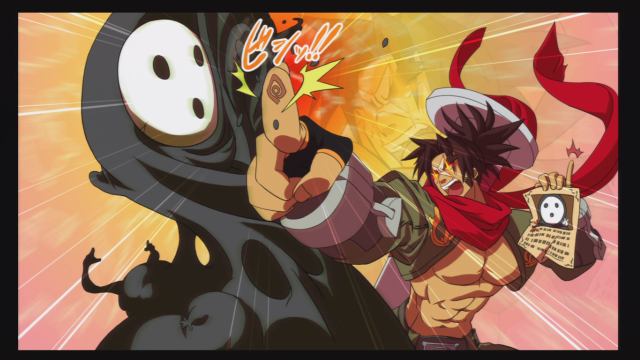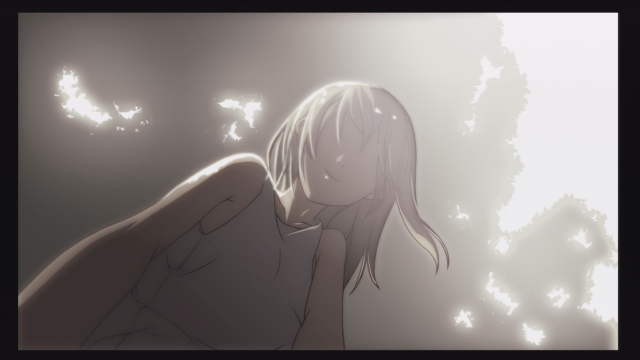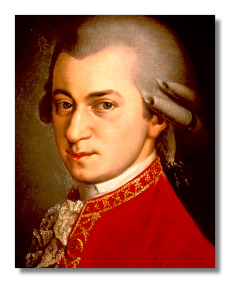Time Travel
Time Travel, atau perjalanan menembus waktu, adalah sesuatu yang dianggap sains fiksi pada zaman ini. Banyak sekali film yang mengupas topik mesin waktu, contohnya Back to the future, Terminator, Timeline, Time Machine, Frequency, Heroes, Lost, The 4400, dll. Yang aneh, konsep waktu di beberapa film ini berbeda-beda loh.
Yang dimaksud dengan time travel adalah begini : kita (materi) atau informasi dikirim dengan suatu alat yang dinamakan dengan mesin waktu sehingga kita melompat ke masa depan, atau kembali ke masa lalu. Jadi hidup kita yang cenderung maju menuju masa depan bukanlah dikatakan time travel.
Misalkan kamu berangkat dari jakarta dengan pesawat supersonik MACH2 pukul 5 sore dan kamu sampai di Irian jaya beberapa menit kemudian dan waktu disana sudah menunjukkan pukul 7.13 malam. Ini bukan time travel, hanya perbedaan waktu di dua tempat yang bujurnya berbeda. Kalau kamu sampai di Irian jaya dan tiba-tiba waktu sudah berlalu 5 tahun, nah, itu baru time travel.
Tapi apakah time travel itu mungkin terjadi menurut ilmu fisika? Fisika newton mengatakan tidak, karena waktu bagi Isaac Newton adalah bagaikan anak panah yang ditembakkan. Ia melaju searah dan tetap. Jam berdetak sama cepatnya dimanapun di jagat raya ini. Lalu datang pak Albert Einstein yang membuktikan kalau rupanya Newton itu salah besar. Einstein bilang, waktu itu bagaikan aliran air di sungai. Ia bisa dipercepat, diperlambat, dan kadang ia bermuara di suatu tempat, kadang sungainya malah bercabang dua. Fisika Einstein yang terkesan gila ini ternyata memungkinkan terjadinya time travel.
Alasan mengapa time travel tidak mungkin terjadi.
Stephen Hawking
Tapi banyak ilmuwan besar yang menganggap time travel itu tidak mungkin/tidak boleh terjadi. Stephen Hawking, misalnya. Beliau adalah genius yang tidak percaya pada time travel. Ia terus berusaha membuktikan kalau time travel itu tidak mungkin dilakukan. Anehnya, sampai saat ini, tidak ada satupun hukum di fisika yang melarang terjadinya time travel. Time travel mungkin terjadi!
Lalu Stephen Hawking mengeluarkan satu pertanyaan yang sangat terkenal, yang bertujuan untuk membungkam orang yang terobsesi dengan membuat mesin waktu. Dia bilang begini :
“Kalau mesin waktu itu ada, dan time travel itu bisa diciptakan, mengapa kita belum menjumpai turis yang datang dari masa depan? Seharusnya turis2 sekarang sudah membanjiri zaman ini, datang dari masa depan untuk mengambil foto dsb. Mengapa belum ada seorang pun?”
Lalu ada juga beberapa paradoks yang membuat time travel terkesan mustahil :
1. Grandfather Paradox
Ini paradoks yang paling terkenal. Begini maksudnya : Misalkan kamu kembali ke masa lalu dan membunuh kakekmu, maka ayah mu tidak pernah dilahirkan dan akibatnya kamu tidak pernah ada. Kalau kamu tidak pernah ada, bagaimana kamu bisa kembali ke masa lalu dan melakukan pembunuhan itu?
2. Information paradox
Misalnya kamu kembali menemui dirimu sendiri dimasa lalu dan memberikan rahasia membuat mesin waktu kepada dirimu yang lebih muda. Dirimu yang lebih muda itu kemudian menggunakan rahasia itu untuk membangun mesin waktu dan kemudian menggunakan mesin waktu itu untuk kembali mengunjungi dirimu dan memberikan rahasia mesin waktu itu. Ini paradoks karena dari mana informasi asli (rahasia mesin waktu itu) berasal?
Contoh information paradox dapat kita lihat di film Harry Potter and the Prisoner of Azkaban, ketika Harry Potter kembali ke masa lalu dan berhasil membuat mantra patronus padahal dia sebelumnya tidak mampu. Ketika ditanya kenapa dia bisa membuatnya, dia bilang, aku bisa kali ini karena aku sudah membuatnya. Masuk akal gak? Haha..
3. Bilker’s Paradox
Misalnya, kamu menggunakan mesin waktu utk kemasa depan, & di masa depan kamu melihat dirimu menikah dengan seorang cewek yg namanya Jane. Lalu kamu kembali ke masa sekarang dan malah menikahi cewek lain yang namanya Cindy, maka masa depanmu sudah berubah & pertanyaanya, kok dimasa depan yg pertama saya bisa nikah sama Jane?
4. Sexual Paradox
Paradox ini lebih membingungkan lagi. Kamu kembali ke masa lalu & bertemu dengan ibumu ketika dia masih remaja. Kalian jatuh cinta & akhirnya menikah dan punya anak. Anak itukah dirimu? Mungkinkah kamu meng-ayah-i dirimu sendiri? Ini dapat dilihat di film Back To The Future, dimana Marty kembali ke masa lalu & bertemu ibunya yg kemudian jatuh cinta pada dirinya.
Contoh Sexual paradox yg lebih aneh adalah seperti ini :
Sebuah novel Janus Equation karya G Spruill, seorang ilmuwan bertemu seorang gadis yg sangat cantik & mereka jatuh cinta, lalu menikah. Setelah beberapa lama, ternyata ilmuwan itu mengetahui kalau gadis itu pernah operasi plastik & operasi kelamin & dia sesungguhnya adalah laki-laki. Bahkan ternyata gadis itu adalah sang ilmuwan sendiri yg datang dari masa depan. Ini artinya dia berhubungan seks dengan dirinya sendiri. Kita jadi bertanya-tanya, bagaimana kalau mereka punya anak, dan misalkan anak ini kembali ke masa lalu dan menjadi ilmuwan dan memulai semuanya lagi, mungkinkah kamu jadi ayah, ibu, dan anak sekalian?
Jadi, bisa kamu lihat kalo time travel membuka banyak ketidakmungkinan, paradoks. Kamu bisa mengubah sejarah hanya karena melakukan sesuatu yang simple (butterfly effect). Misalkan kamu kembali ke masa dinosaurus dan tidak sengaja menginjak serangga yang kelak akan menjadi nenek moyang manusia. Maka kamu akan punah dan tidak pernah dilahirkan. Bahkan, menurut kuantum mekanik, gerak sebuah elektron saja bisa merubah semuanya di dunia ini. Begitu seriusnya implikasi time travel, maka banyak orang yang bilang time travel mustahil.
Alasan mengapa Time Travel mungkin (solusi dari paradoks diatas)
Percaya atau tidak, semua paradoks dan pertanyaan Hawking diatas bisa dipecahkan. Bahkan, ada 2 solusi :
1. Semuanya sudah tertulis.
Mungkin ketika kamu kembali ke masa lalu dan bertemu dengan dirimu yang lebih muda, kamu sudah bertemu dirimu yang lebih tua pada saat itu. Dan alam ini mencegah supaya terjadi paradoks. Kamu bisa mencoba untuk membunuh kakekmu, tapi kamu akan gagal dalam setiap percobaan. Dan ketika kamu sudah tua nanti, kakekmu akan bercerita bahwa dulu ada orang yang mencoba membunuhnya. Di skenario ini, kita sebagai manusia tidak punya “free will” lagi. Semuanya sudah diatur. Kita hanya memenuhi takdir kita dalam universe ini. Mantap kan?
Di skenario ini, semua paradox tidak mungkin terjadi. Kalau ayahmu bukan dirimu, maka ketika kamu kembali ke masa lalu dan berniat menikahi ibumu, kamu tidak akan berhasil.
Contoh skenario ini ada di film Harry Potter and the Prisoner of Azkaban, ketika Hermione melihat ada batu yang dilempar seseorang ke gubuk Hagrid, ia lalu sadar, bahwa ialah yang melempar batu itu, maka ia melakukannya untuk memenuhi takdirnya. TV seri Lost di season ke-5 juga menggunakan konsep waktu seperti ini. Semua yang sudah terjadi, sudah terjadi.
Film lain yang menggunakan konsep ini contohnya Frequency, Timeline, Time Crime, Harry Potter, dsb.
Solusi ini mencegah terjadinya paradox.
2. Parallel Universe.
sebuah contoh bagaimana setiap pilihan bisa menghasilkan dunia yang baru
Inilah solusi yang paling aneh namun tampaknya paling mungkin secara scientific, karena solusi ini sesuai dengan hukum mekanika quantum.
Solusi ini bilang kalo setiap kali kamu kembali ke masa lalu, kamu masuk kedalam alternate universe, sebuah dunia yang baru yang sangat mirip dengan dunia kita, tapi bedanya Cuma ada kamu yang datang dari masa depan. Jadi kalo di dunia ini kamu membunuh ayahmu, maka kamu membunuh orang yang mempunyai hubungan genetik dengan dirimu, tapi itu bukan ayahmu. Di dunia dimana ayahmu mati, kamu tidak pernah dilahirkan, tapi di dunia asalmu, ayahmu masih hidup, sehingga kamu juga eksis.
Semua paradoks menjadi lumpuh kalo memang waktu konsepnya begini. Pertanyaan Hawking pun terjawab sudah. Tidak ada turis yang berasal dari masa depan karena mereka semua memasuki parallel universe.
Film yang menganut konsep ini contohnya Terminator, Back To The Future, Heroes, The 4400, The Time Machine, dll
ada banyak dunia, bahkan ada tak terhingga dunia menurut teori paralel universes
Soruce : KASKUS









































